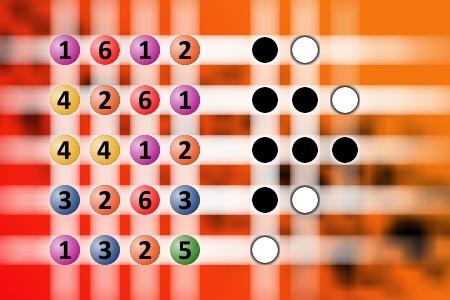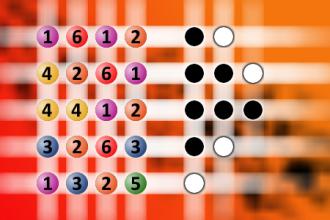Find the right combination
The computer chose a secret code (sequence of 4 digits from 1 to 6). Your goal is to find that code. Black circles indicate the number of hits on the right spot. White circles indicate the number of hits on the wrong spot.Correct answers: 0
#brainteasers #mastermind

Scary Collection 07
A witch joke
Why did the stupid witch keep her clothes in the fridge?
She liked to have something cool to slip into in the evenings!
A cannibal joke
What happened when the cannibals ate a comedian?
They had a feast of fun!
A ghost joke
What do you call a ghost's mother and father?
Transparents!
A vampire joke
Who plays centre forward for the vampire football team?
The ghoulscorer!
A witch joke
Why did the witch give up fortune telling?
There was no future in it!
A Halloween joke
Why was everyone tickled by the fried chicken at the Halloween party?
Because the feathers were still on the chicken!
A witch joke
What did the doctor say to the witch in hospital?
With any luck you'll soon be well enough to get up for a spell!
Why did the stupid witch keep her clothes in the fridge?
She liked to have something cool to slip into in the evenings!
A cannibal joke
What happened when the cannibals ate a comedian?
They had a feast of fun!
A ghost joke
What do you call a ghost's mother and father?
Transparents!
A vampire joke
Who plays centre forward for the vampire football team?
The ghoulscorer!
A witch joke
Why did the witch give up fortune telling?
There was no future in it!
A Halloween joke
Why was everyone tickled by the fried chicken at the Halloween party?
Because the feathers were still on the chicken!
A witch joke
What did the doctor say to the witch in hospital?
With any luck you'll soon be well enough to get up for a spell!

